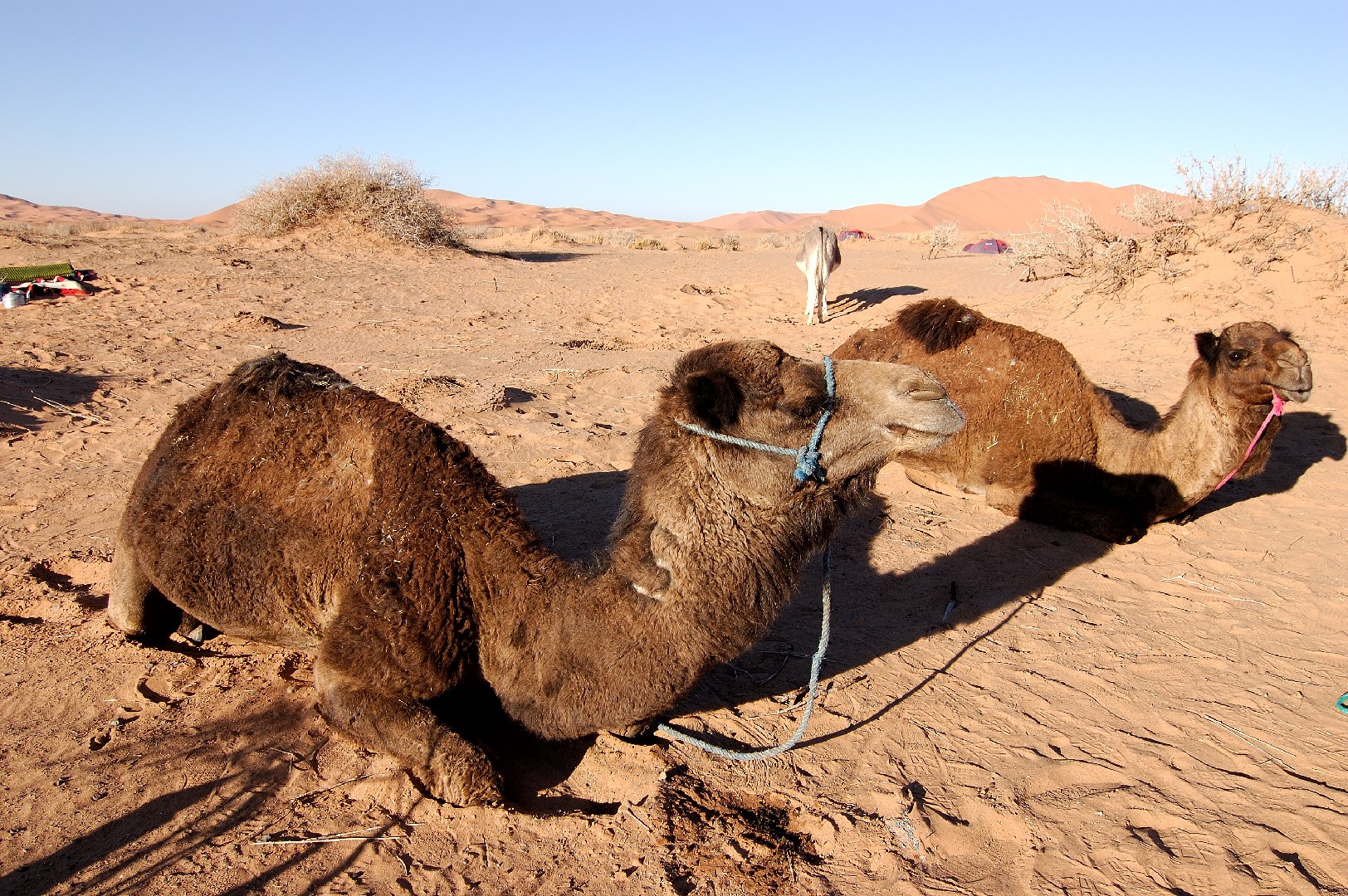Dromedary
A species of Camel, Also known as Arabian camel, One-humped camel Scientific name : Camelus dromedarius Genus : Camel
Dromedary, A species of Camel
Also known as:
Arabian camel, One-humped camel
Scientific name: Camelus dromedarius
Genus: Camel
Content
Description General Info
 , used under CC-BY-SA-2.0 /Cropped and compressed from original
, used under CC-BY-SA-2.0 /Cropped and compressed from original Description
The dromedary (Camelus dromedarius), also known as one-humped or Arabian camel, is a mammal from the genus of the old world camels within the camel family (Camelidae). It is widespread as a pack and mount animal in large parts of Asia and Africa, but is extinct in its wild form. The name comes from the Greek δρομάς (dromás), which means "ongoing".
General Info
Lifespan
40-50 years
Diet
Dromedary is primarily a herbivorous creature, feeding extensively on desert vegetation. Their diet mainly consists of shrubs, grasses, and thorny plants, consuming seeds and grains when available. Interestingly, they can endure several days without food, owing to their unique physiological adaptations.
Appearance
The dromedary is a large, sturdy animal, standing at up to 2.15 metres tall at the shoulder with a humped silhouette. Adapted to desert life, it has two-toed feet and thick, leathery skin, which is typically sand-coloured. Its most notable feature is a distinctive single hump, used for fat storage. Coarse, sparse hair covers the body, while the neck, shoulders, and hump have longer fur. There is no significant appearance difference between genders or due to age.
Behavior
Dromedary is a herbivorous species known for their unique adaptation to desert environments. Typically solitary, they are primarily active during cooler morning and evening hours, sheltering from midday heat. Dromedary communicate through body movements and vocalizations, and males exhibit dominance behaviors during the breeding season. Their ability to travel long distances without water exemplifies their survival adaptations.